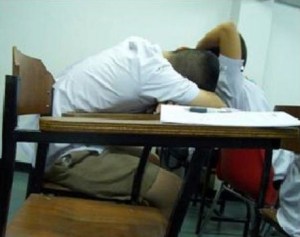 Online college courses are replacing traditional classrooms at a crazy-fast pace, yet it is still unknown whether they are actually better for students. A new large-scale study of 40,000 community and technical college students finds that, compared to traditional courses, students in online courses receive worse grades and are more likely to drop out. The negative impact of online study is disturbingly pronounced for minorities and students already at risk of dropping out.
Online college courses are replacing traditional classrooms at a crazy-fast pace, yet it is still unknown whether they are actually better for students. A new large-scale study of 40,000 community and technical college students finds that, compared to traditional courses, students in online courses receive worse grades and are more likely to drop out. The negative impact of online study is disturbingly pronounced for minorities and students already at risk of dropping out.“Overall, the online format had a significantly negative relationship with both course persistence and course grade, indicating that the typical student had difficulty adapting to online courses,” writes Di Xu and Shanna Smith Jaggars of Columbia University. “Specifically, we found that males, black students, and students with lower levels of academic preparation experienced significantly stronger negative coefficients for
online learning compared with their counterparts, in terms of both course persistence and course grades.”
The research team controlled for an impressive array of student characteristics, class types and demographics, and found a negative impact across most of their variables. Interestingly, they also looked at courses where more than 75 percent of the students were at risk, and found that the presence of at-risk peers made drop out all the more likely.
The impact, or “effect size” as it’s called in statistics, was very large. Taking a course online correlated with a grade drop of between 0.15-0.4 on average out of a 4.0 scale.
The study, however, should be taken in context. As I’ve written before, large-scale research by the department of education finds that online education is often better than traditional face-to-face instruction.
We don’t yet know how massively open online courses (MOOCs) will affect students as they scale to the wider population. This new study from Columbia is an important part (but only a part) of the ongoing national experiment.












